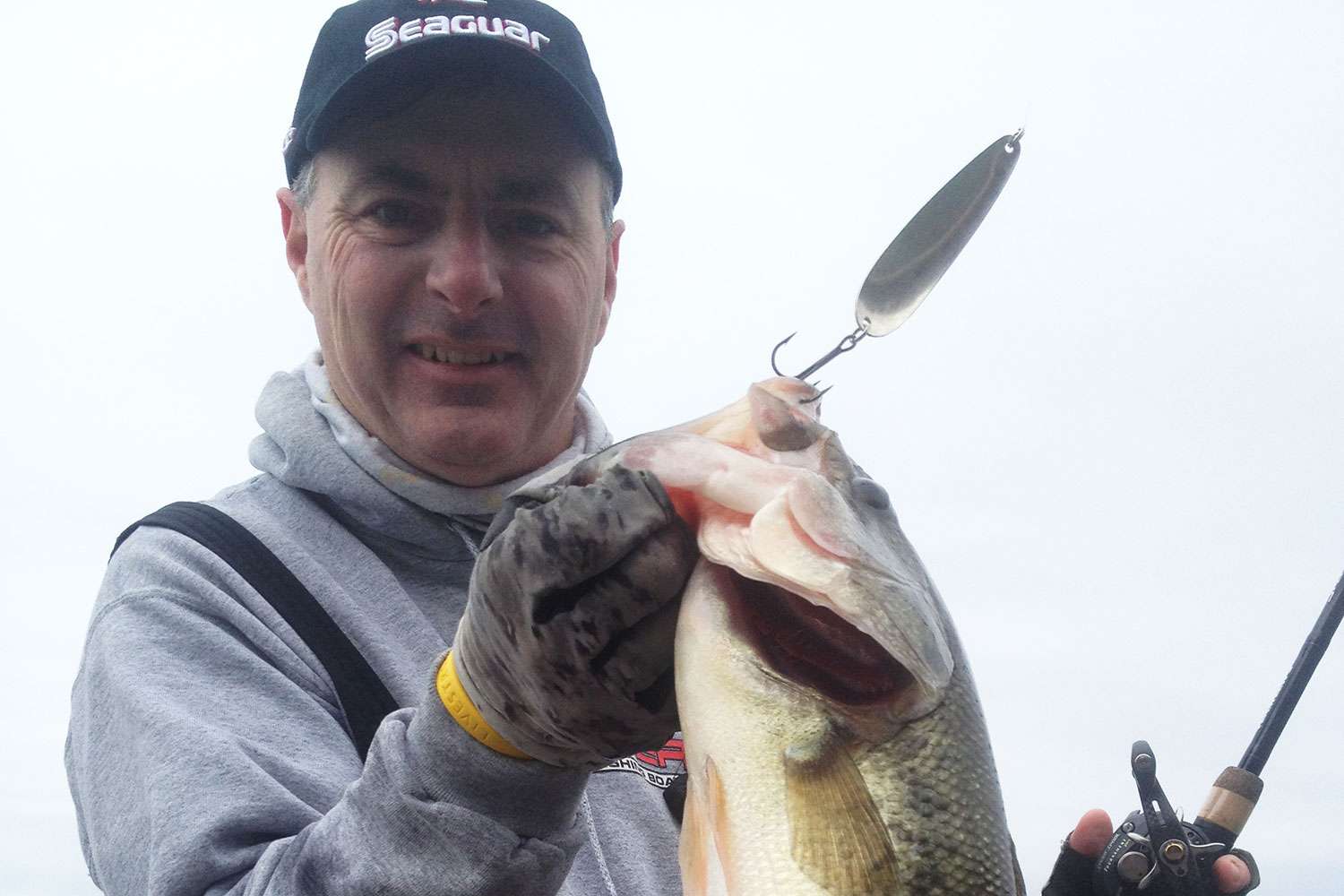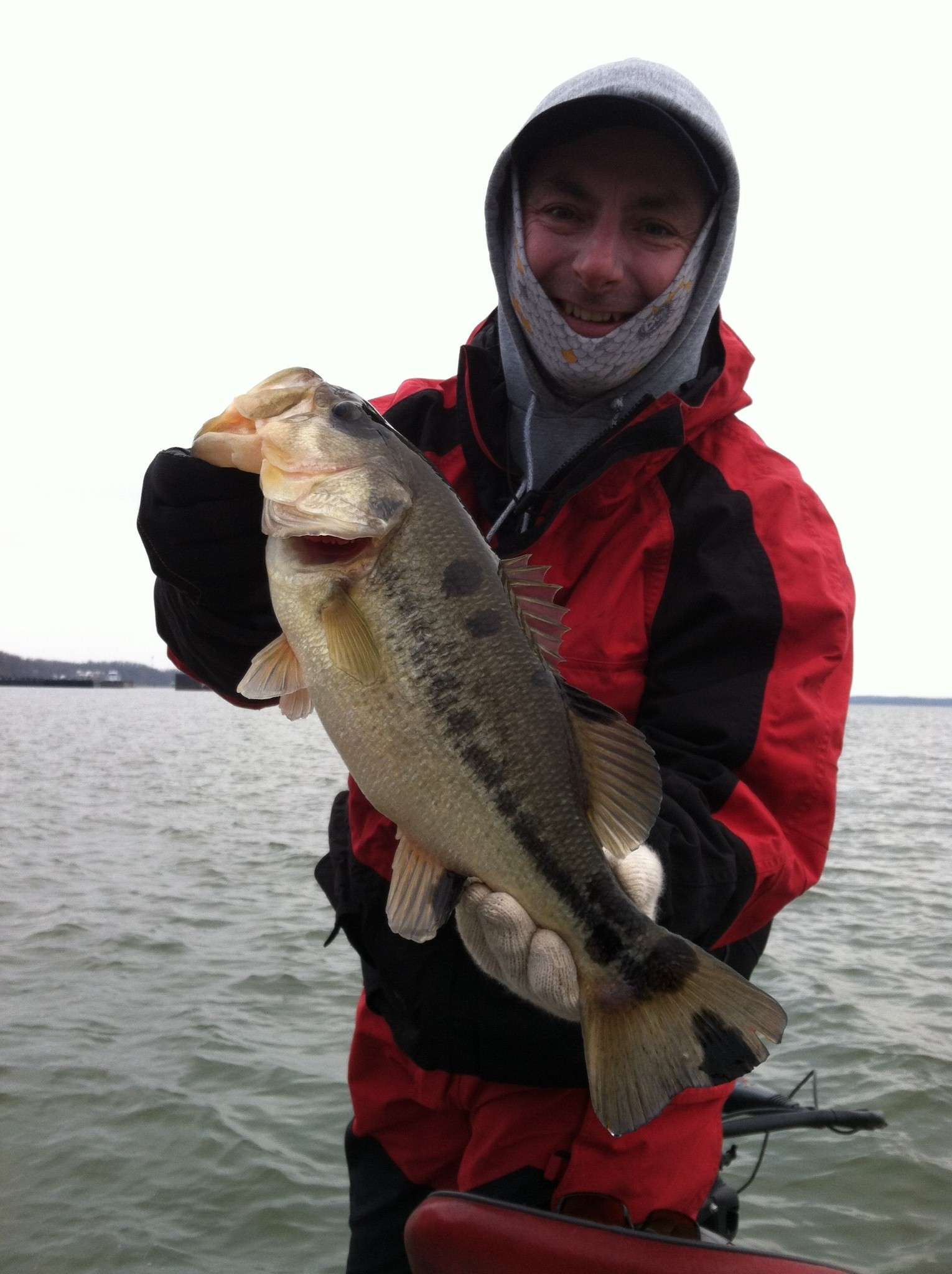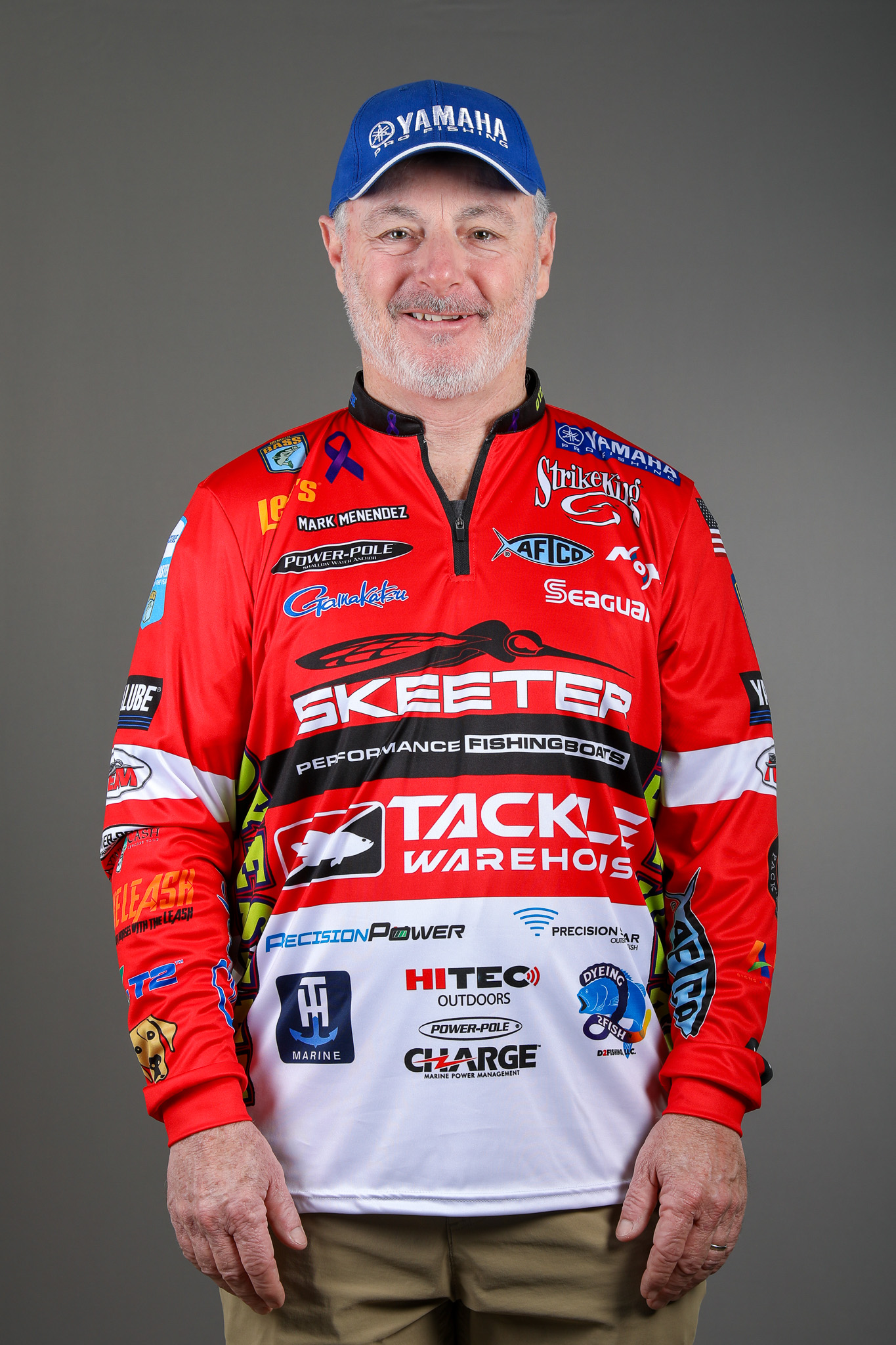
A fork in the creek channel could mean it is time for a spoon. A big flutter spoon may be a mystery to most bass anglers. Those that accomplished this technique understand its true fish-catching potential. It has the right characteristics to lure in the biggest bass in the school.
The flutter spoon was disclosed on a head-to-head television show on Kentucky Lake. The bait ignited a school of large bass while in a competition. Over 20 pounds of “spoon-fed” largemouth were landed in minutes; a prized tournament secret was out of the bag.
The spoon craze was on in warmer waters.
The ingenuity of anglers has seen the productivity of the spoon continue to gain cult popularity. The action of a spoon has been utilized in fishing for years; even from the North Country, giant red and white spoons have caught monster pike for years. When the spoon is dropped on a fall, it flutters like a dying baitfish, and a slow retrieve produces a wide wobbling action. These two actions dominate for big bass presentations.
Tackle choices
Working a structure spoon requires heavy tackle. Most of the larger spoons will weigh over an ounce making the Lew’s casting rod in a medium-heavy, fast-tip action perfect for the technique. A 7-foot Lew’s Custom Speed Stick (WR1) allows for long casts and better control over the spoon vertically.
Low stretch Seaguar InvisX fluorocarbon will ensure superior feel as the spoon is falling and low stretch hookset capabilities. Anglers can effectively utilize 15- to 25-pound lines according to cover and needed fall rates of the spoon.
A high-speed larger capacity reel like the Lew’s BB1HZ (6.4:1 ratio) will hold sufficient quantities of line. The flutter spoon will cover long distances of a strike zone. Proper equipment is what dictates this lure’s strike/catch ratio.
Late summer/fall thermocline bass
In the late summer, the thermocline may come into play on certain bodies of water. Southern impoundments and rivers with little or no flow will quickly stratify. The thermocline is an abrupt temperature gradient band of water that will form two distinct layers. The top layer of water will hold sufficient oxygen levels for life, while the middle layer will not hold enough oxygen to support most fish. They will then have to move shallower or deeper than the oxygen-depleted section in the water column to find the most suitable oxygen levels. As a result, the fish suspension leaves most anglers scratching their heads on techniques to catch these bass.
Worms and jigs will fall through the strike zone. Crankbaits can be effective if the angler can choose the correct bait and line size to reach the level of the suspended bass. A fluttering spoon will stay in the strike zone longer when counted down to a specific depth.
The typical spoon cast is a long cast, and the angler allows the spoon to make it to the bottom or counts it down to a desired level. A quick lift or rip of the rod tip skyward lifts the spoon from the bottom, but it’s important that the lure must fall on a semi-tight line. This allows the angler to feel the flutter of the spoon and watch the line for strikes.
A strike can be anything from a violent jerk of the line to the line slightly jumping. Anglers need to experiment with double jerks of the spoon; soft twitches and slow rolling the spoon back to the boat much like a spinnerbait. Suspended fish are very susceptible to the slow rolled spoon. This is a great way to catch bass hovering just above the thermocline. The slow rolled spoon will stay at a desired level on a slow retrieve. This is often a hard strike from the suspended bass.

Early Thanksgiving presents
As the northern winds of winter begin to cool our waters, spoons for bass take on a new meaning. Water temperatures begin to fall making the bass’ favorite fall meal head to the thermal refuge of deeper water. Threadfin Shad are very sensitive to cold water, and they will migrate to the warmest water possible.
Often during the turnover period in the fall, warmer waters are pushed downward in the water column from cooling surface waters. The schools of threadfin, blueback herring and other baitfish dive with this warmer water. It is here in the depths of the reservoirs the baitfish will reside until the warmth returns of spring.
This scenario of distance and depth plays in to the vertical nature of spooning for bass. Channel swings, creek channel junctions or long points are primary target for spooning. Every targeted spoon structure should have a single universal commonality: A flat feeding station with a distinctive drop is crucial.
This presentation may be thought of as “ultra deep flippin.”
Schools of bass are very catchable when viewed on sonar that are tightly relating to the bottom or schools of bait (25 to 70 feet). Loosely formed schools or bass suspended well off the bottom tend to be aggressive fish. Don’t discount them if they are located on or near quailty structure. Simply revisit them later to see if the fish have moved towards the feeding station or shad schools.
Winter presentations
Vertically jigging a spoon has caught many bass in tightly grouped schools. By pinpointing a deep school on a Garmin 7612 sonar unit, a spoon can be visually presented to the school while the angler watches the spoon on the screen of the unit in DownVu. Panoptix allows the angler the ability to see a school of bass and or lure forward of the bow of the boat. This places distance between angler and bass without fishing directly on top of the school and can be a major advantage on highly pressured lakes.
Bass can be caught in rapid-fire succession under these cold conditions. A smaller heavier jigging spoon is usually the order to drop quickly for reaction strikes. However, the slower flashy action of the flutter spoon will attract larger bass in the school and can be the ticket in extremely cold water. Very short deliberate jigging action is often the best way to present any spoon.
When anglers come to the fork in the creek channel, spoon-feed the fish. It can result in monster fish catches.
Overcoming the challenges
Spoon fishing has its own set of issues; line twist can be a problem. Always add a barrel swivel to the split ring of a Strike King Sexy Spoon. This will reduce line twist to a minimum when casting and fluttering a spoon.
An additional option is to add a hook to the split ring of the spoon. This will help improve hookup rates with those hard-to-hook bass. It may also tell the angler that the bites are from white, yellow or smaller black bass. Always use a short-shank hook like a Mustad KVD treble in a No. 2 size. This will keep line fouling to minimum.
The extra hook will not hinder the fluttering action. It will also make it possible to catch doubles once a school of bass has been ignited.
A third modification is adding a feathered treble to the spoon or as a free-floating feathered treble to the main line. This will add a target to the bass. In slightly dingy or deep applications the spoon is a hard target for the bass to strike. The feather trebles provide that target.
Mark Menendez is a Bassmaster Elite Series angler. Follow him at Facebook and Twitter.





